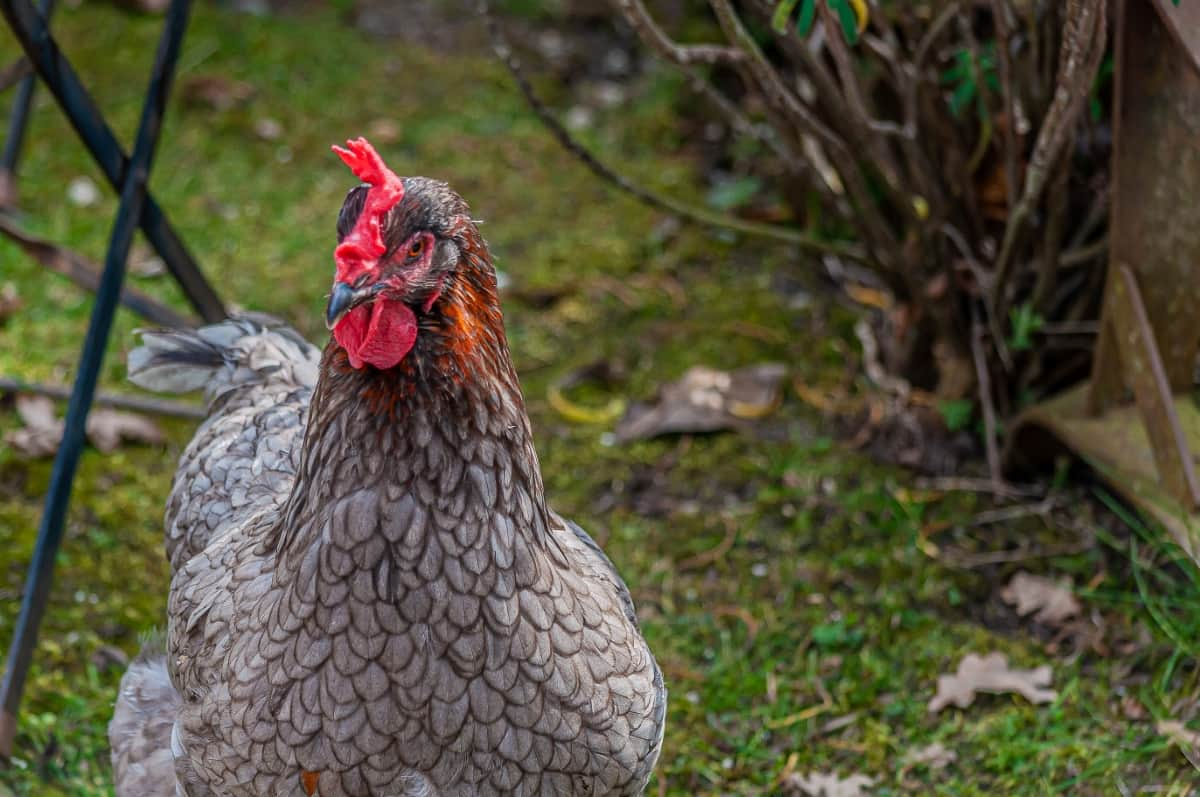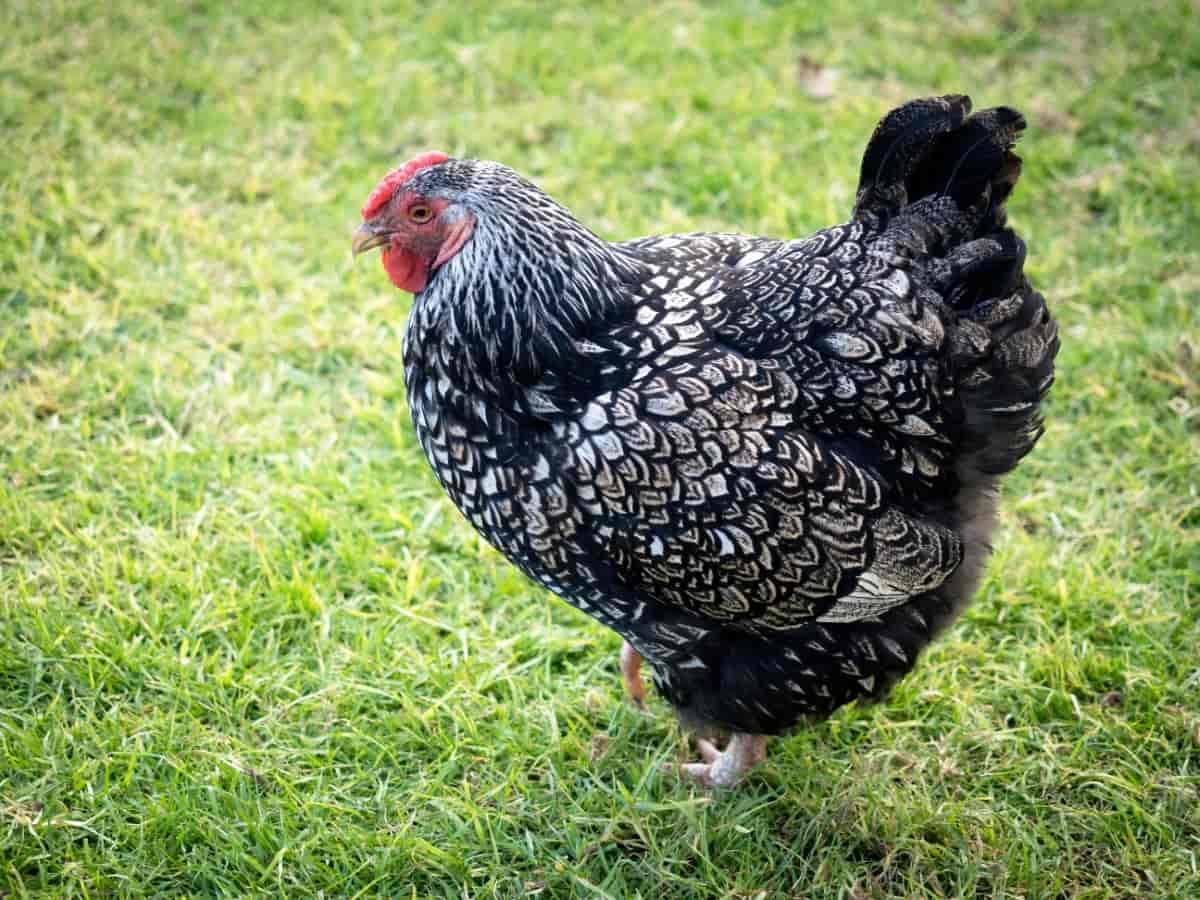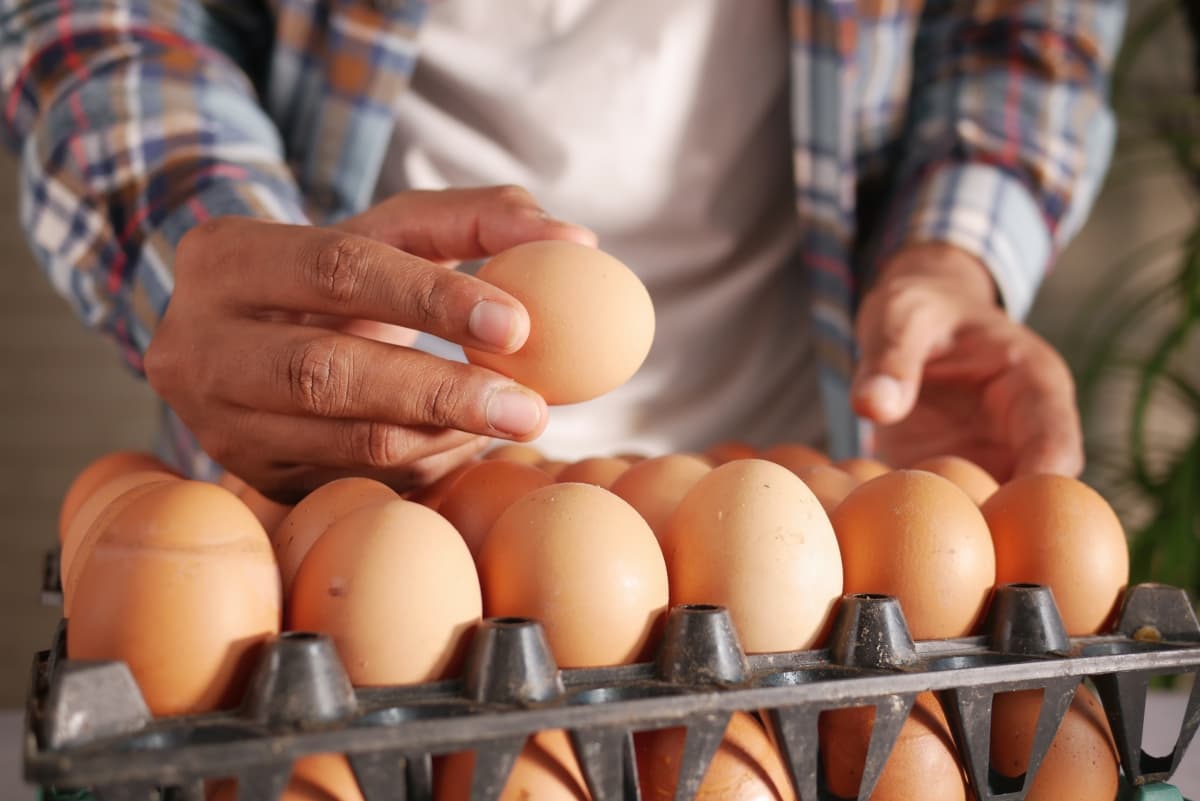Wyandotte chickens are renowned for their dual-purpose nature, excelling in both meat and egg production. Wyandotte chicken egg production per year is typically around 200 to 240 large brown eggs, with consistent production throughout their lifespan. Their eggs are prized for their rich flavor and sturdy shells, making them ideal for culinary use and incubation.

Wyandotte Chicken Egg Production
Breed Variations and Their Impact on Egg Production
While Wyandotte chickens come in various color variations, such as Silver, Golden, and Blue, egg production generally remains consistent across the breeds. However, individual variations may slightly affect factors like egg size and laying frequency. Proper breeding and management practices can optimize egg production regardless of the variation chosen.
Optimizing the Coop for Egg Production
Importance of Nesting Box Design and Placement
Ensure a spacious and well-ventilated coop to accommodate Wyandotte chickens comfortably. Adequate space promotes a stress-free environment, enhancing egg-laying behavior. As Wyandotte chicken coop essentials, craft well-designed nesting boxes with proper dimensions (12×12 inches) and adequate bedding. Place them in a quiet, secluded area to provide privacy, encouraging hens to lay eggs consistently.
Maintaining Ideal Lighting Conditions
Implement a lighting system that mimics natural daylight. Consistent lighting, around 14-16 hours per day, stimulates Wyandotte hens to lay more eggs, optimizing productivity.
Nutrition for Maximum Egg Production: Best Feed for Wyandotte Hens
Essential Nutrients for Egg-Laying Hens
- Protein: Ensure feed contains around 16-18% protein to support Wyandotte chicken egg production and feather maintenance.
- Calcium: Crucial for strong eggshells; offer calcium supplements or layer feed with at least 3-4% calcium.
- Phosphorus: Balances calcium uptake; aim for a phosphorus level of 0.45-0.6% in the diet.
- Vitamins: Provide a well-balanced vitamin mix, especially vitamins A, D, and E, to support overall health and egg production.
- Water: Ensure access to clean, fresh water at all times to prevent dehydration and support egg production.
Recommended Feeds and Supplements
- Layer feed: Offer about 1/4 to 1/3 pound of layer feed per hen daily, accordingly, at different stages in the Wyandotte egg laying cycle.
- Calcium supplements: Provide oyster shells or crushed eggshells free-choice in a separate feeder.
- Grit: Offer insoluble grit to aid in digestion, especially if hens are not allowed access to the outdoors.
Watering Practices for Egg-Laying Hens
The Role of Water in Egg Production
- Hydration: Adequate water intake for maintaining proper hydration levels in hens, which is crucial for egg formation.
- Nutrient Transport: Water helps transport essential nutrients to the reproductive system, supporting the development and laying of eggs.
Tips for Ensuring Adequate Water Intake
- Ensure hens have constant access to clean, fresh water. Dirty water can cause bacterial infections and decreased Wyandotte chicken egg production.
- Position waterers at a convenient height to encourage frequent drinking without causing strain on the birds’ necks.
- Clean waterers frequently to prevent algae growth and contamination. Scrub them with a mild detergent and rinse thoroughly.
- During hot weather, provide additional water sources or use shade to prevent dehydration.
- Consider adding electrolytes or vitamins to the water, especially during times of stress or illness, to support overall health and egg production.
Managing Hen Health for Optimal Egg Production
Common Health Issues in Egg-Laying Hens
- Respiratory Health: Watch for signs of respiratory distress, as respiratory issues can impact Wyandotte chicken egg production.
- Parasitic Infestations: Regularly check for external parasites like mites or lice, which can affect the overall well-being of hens.
- Reproductive Disorders: Keep an eye on reproductive health care for Wyandotte layers, as issues such as egg binding or prolapsed vents can arise.
Preventative Healthcare Practices
- Proper Nutrition: Provide a balanced and nutrient-rich diet to support overall health and egg production.
- Clean Living Environment: Maintain a clean coop to reduce the risk of disease and infestations.
- Regular Veterinary Check-ups: Schedule routine veterinary visits to catch potential health issues early.
In case you missed it: Top 10 Fluffy Chicken Breeds to Raise in Your Backyard

Understanding Egg-Laying Patterns
Seasonal Variations in Egg Production
Egg-laying in Wyandotte chickens often fluctuates with seasonal changes. Typically, peak egg production occurs during spring and summer months when daylight hours are longer. As daylight decreases in fall and winter, egg production may decrease or even cease temporarily. As seasonal care for Wyandotte egg layers, supplemental lighting can help mitigate this decline by simulating longer daylight hours.
Recognizing Signs of Decreased Egg Production
Several indicators may signal a decline in Wyandotte chicken egg production among Wyandotte chickens. These include decreased frequency of eggs laid, smaller egg sizes, changes in eggshell quality, and behavioral cues such as reduced nesting activity. Monitoring these signs allows prompt intervention to address potential issues such as nutritional deficiencies, stress, or health problems.
Breeding for Improved Egg Production
Selective Breeding Practices
Selective breeding involves choosing parent birds with desirable traits such as high egg production, strong eggshell quality, and consistent laying patterns. Breeders carefully select individuals with these characteristics to mate and produce offspring with enhanced egg-laying abilities.
Genetic Factors Influencing Egg Quantity and Quality
Genetic factors influencing egg quantity include traits like the rate of Wyandotte chicken egg production, age at onset of laying, and persistence of laying. Breeding programs aim to identify and select genes associated with increased Wyandotte chicken egg yield to enhance the overall productivity of Wyandotte chickens.
Egg quality is influenced by genetic factors such as shell strength, yolk color, albumen quality, and shell texture. Breeders focus on selecting genes associated with these traits to produce eggs with desirable characteristics like sturdy shells and rich yolk color, meeting consumer preferences and market standards.
Handling and Storing Eggs Safely
Best Practices for Egg Collection
Collect eggs daily to prevent them from sitting too long in the nest box, which can lead to spoilage or breakage. Use clean containers or egg baskets to gather eggs, ensuring they remain intact during transport. Be gentle when removing eggs from the nest to avoid damaging them.
Tips for Storing Eggs to Maintain Freshness
Store eggs with the pointed end down in a clean and cool environment, ideally between 1.6-7.2°C. Avoid washing eggs before storage as it removes the natural protective coating. Use egg cartons or trays to keep eggs organized and prevent them from absorbing odors from other foods. Rotate eggs regularly to maintain freshness, using the oldest eggs first.
Increasing Egg Production Naturally
Environmental Enhancements
Optimizing the coop environment with adequate ventilation, proper lighting, and comfortable nesting areas encourages hens to lay more eggs. Additionally, ensuring cleanliness and providing ample space per bird promotes their overall well-being.
Stress Reduction Techniques
Reducing stressors such as overcrowding, loud noises, and predator threats for enhancing Wyandotte egg quality. Implementing regular routines and minimizing disturbances during laying times contribute to a calm and productive flock.
In case you missed it: The Ultimate Guide for Olive Egger Chicken: Facts, Raising and Care

Troubleshooting Common Egg Production Issues
Addressing Low Egg Production
- Nutritional Deficiencies: Ensure the Wyandotte chickens are receiving a balanced diet with rich protein and calcium.
- Stress Reduction: Minimize stress factors such as overcrowding, excessive noise, or predator threats.
- Age Consideration: Evaluate the age of the hens; older birds may experience a decline in egg laying and may need supplemental support.
Dealing with Egg Quality Problems: Solutions For Wyandotte Egg Production Issues
- Calcium Deficiency: Supplement the diet with crushed oyster shells or calcium supplements to strengthen eggshells.
- Infectious Diseases: Regularly inspect for signs of diseases such as Infectious Bronchitis or Newcastle Disease; consult a veterinarian for treatment.
- Environmental Factors: Maintain clean nesting areas to prevent bacterial contamination of eggs; ensure proper ventilation and lighting in the coop.
In case you missed it: Ixworth Chicken: Breed Characteristics, Temperament, Eggs, Price, Uses, and Raising

Conclusion
By following these guidelines, you can help ensure that your Wyandotte chickens are healthy, happy, and productive egg layers. Remember to provide them with proper care, attention, and a conducive environment to thrive and fulfill their egg-laying potential.
- Feed Your Flock for Less: Top 10 Tips to Save on Chicken Feed
- Ultimate Guide to Ossabaw Island Hog: Breeding, Raising, Diet, and Care
- Hatching Answers: The Top 10 Reasons Your Chickens Aren’t Laying Eggs
- Eggs and Economics: Breaking Down the Cost of Raising Backyard Chickens
- Defend Your Greens: Proven Methods to Keep Iguanas Out of Your Garden
- Ultimate Guide to Cinnamon Queen Chicken: A Comprehensive Guide for Beginners
- Ultimate Guide to California Tan Chicken: Breeding, Raising, Diet, Egg-Production and Care
- Ultimate Guide to Marsh Daisy Chicken: Breeding, Raising, Diet, and Care
- 10 Types of Chicken Farming Businesses You Can Start for Profits